People turn to Google for just about everything these days.
Whether it’s to buy something, learn about something in-depth, get a quick answer, or simply pass the time, Google is the primary stream of information for the vast majority of people living with an internet connection.
To be precise, Google makes up 92.19% of the search engine market share.
The constant quest of SEO professionals is to get their content matched up with the search queries it answers.
But how has this task changed over time?
While there can be books written on this subject, the general consensus is that search queries are becoming longer, more specific, and conversational.
In many cases, a portion of this shift can likely be attributed to the rise of voice search.
A lot of what we are seeing is a growing importance on optimizing for questions and semantically related keywords.
So what exactly does this all mean?
And what are the best strategies when you’re down in the trenches of SEO?
Let’s discuss.
Questions & Semantic Search
Since the Google Hummingbird Update in 2013, Google has been on a steady path toward providing more personalized and useful search results.
You know when you enter a super vague query into Google and it somehow understands exactly what you’re getting at? Like when you are speaking to a close friend or family member?
This is semantic search.
A big aspect of Google’s semantic search capability is to pinpoint concepts and entities presented in question-based queries.
When someone enters a question into Google – whether it be by text or voice – the semantic search capabilities work to understand the user’s intent with four key factors:
- The user context.
- Natural language processing (NLP).
- Query stream context.
- Entity identification.
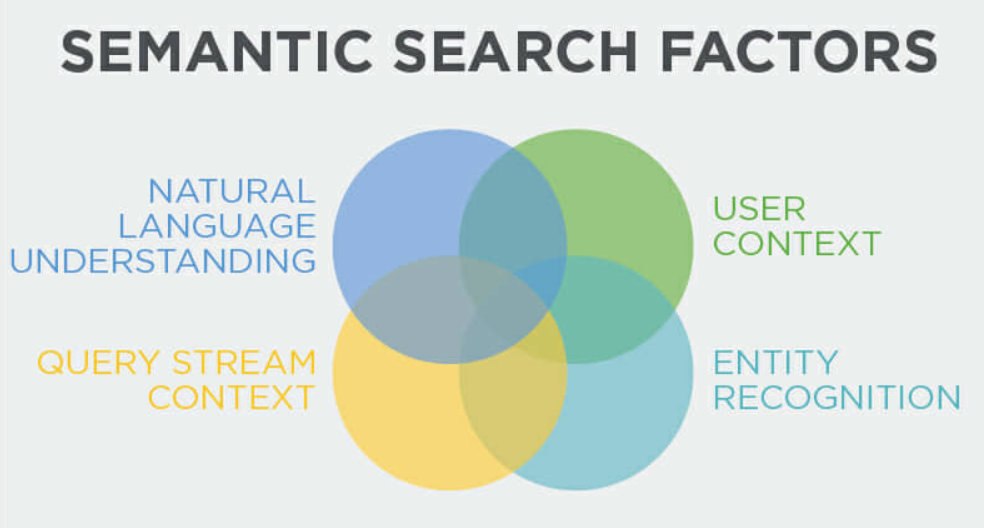
What Types of Questions Does Google Answer?
Thanks to semantic search, Google has taken many steps toward a near-flawless ability to answer a plethora of questions. This is largely due to the developments in artificial intelligence, voice search, schema, NLP, etc.
Google generally answers three types of questions – as opposed to just providing links to the sites with the answers.
- Direct answers
- Short answers
- Long answers
These answers are commonly placed in the Featured Snippet – also known as the “Google Answer Box” or “Position Zero.”
Let’s breakdown the specifics of each.
Direct Answer
Direct answer questions typically start with Who, What, Where, When, Best, Top, and sometimes Why.
These types of questions normally result in quick answers and are oftentimes linked to voice queries.
For example, if you enter a query like [When was Apple founded?], Google will use Hummingbird and semantic search to recognize the user intent to provide a direct answer. This answer would be April 1, 1976.
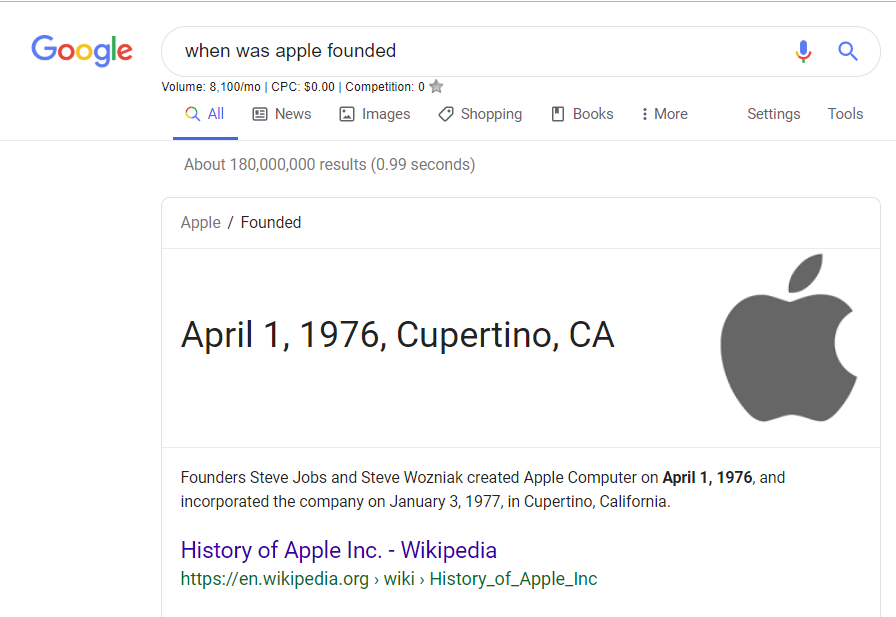
Based on what Google’s algorithms decide is the most reliable source of information, the search engine will pull the answer from the content and display it in the Featured Snippet.
Short Answer
Short answer questions generally start with words like Why and Can. But, given the context, they can also apply to What, Where, Who, etc.
These types of questions can generally be answered in a paragraph, of which is shown on the Featured Snippet.
Let’s ask Google [Why does the sun follow a circular path?]
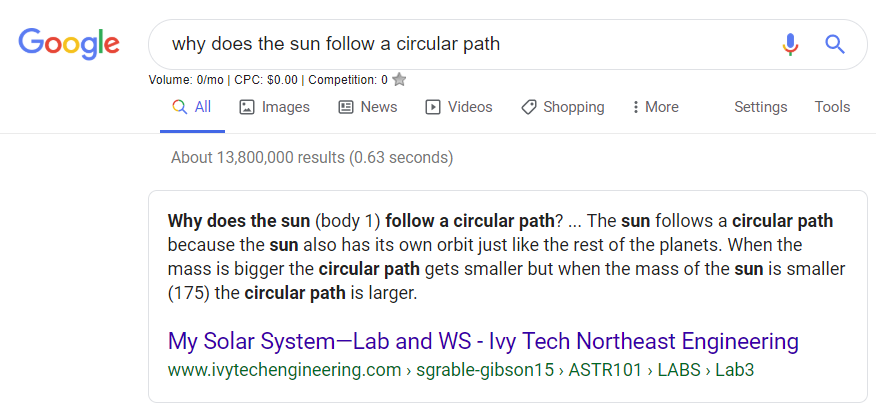
Again, Google’s algorithms will decide which content has the most credible answer here (based on numerous factors), and provide the answer in the Featured Snippet accordingly.
Let’s do another one.
Here’s a query for “Can fish feel pain?”
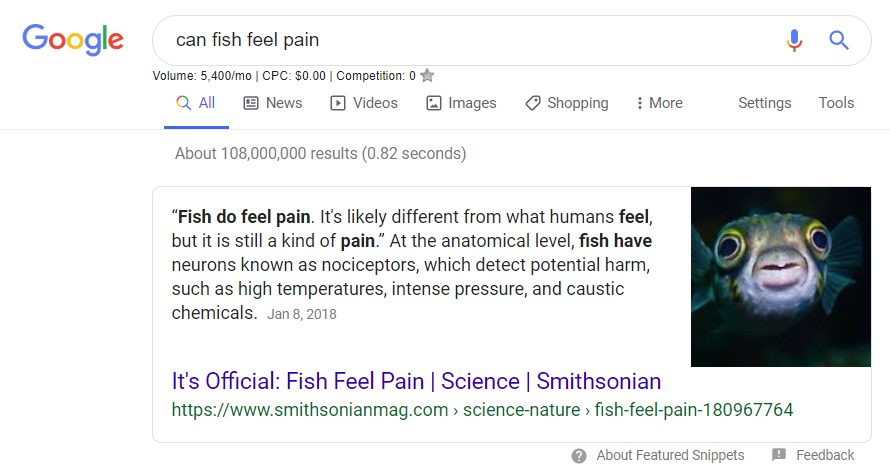
As you can see, Google has provided a 4-5-line answer – drawing from the content it sees as the most credible.
Long Answer
The long answer queries typically get more into the weeds of procedures and processes.
Most commonly, these long answers are matched up with How and Why queries.
Google only has so much space to work with in the Featured Snippet; it can’t list out an entire procedure from A to Z. Instead, it has to abbreviate with an outline.
For example, let’s search for [How to build a treehouse].
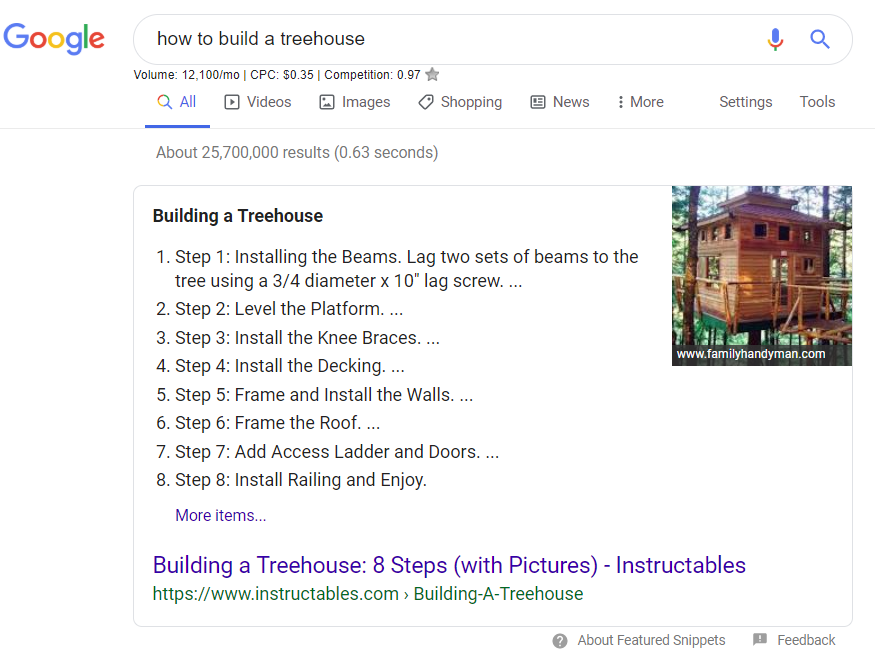
The intent of this question is to get a better understanding of what all factors into the process of building a treehouse. The intent is more or less surface level.
As a result, Google’s algorithms serve up the step-by-step process involved in this project. To get more in-depth, the user needs to click on the link.
Other common examples of long answer snippets relate to how-to guides, recipes, workout routines, etc.
Which Types of Answers Do You Provide?
Everyone wants to get their content proudly placed in the Featured Snippet (or somewhere prominent on Page 1).
Given how much real estate this answer box takes up on Google searches, the potential benefits of taking the spotlight here are huge!
In order to get placed in the Google Answer Box, you first need to have a strong idea of which type of answer your particular piece of content provides, and which keywords attribute to it.
For instance, this online tire store recently published an article around the keyword “best tire brands” – optimized for the question, “what are the best tire brands?”
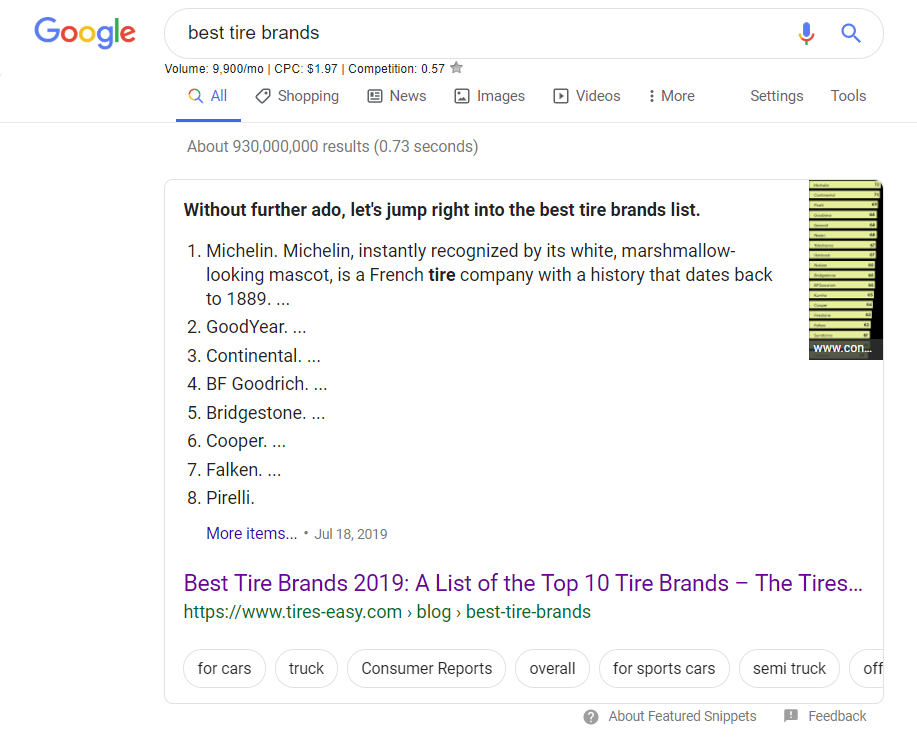
If we look at the Featured Snippet for this query, we see a list of tire brands outlined in the content under H2 tags.
In addition to drawing traffic, the content provides avenues for the user to actually purchase the products.
With each piece of content you create, you should be asking, “what types of questions does this content answer?”
This should be an integral part of how you formulate the outline, as well as how it will funnel into the bigger picture (like generating conversions).
How to Pinpoint Trending Questions & Keywords
In the process of figuring out which type of answer(s) is ideal for your content, you need to identify the trending questions being asked and the search volumes behind them.
One tool you could use is the Ahrefs Questions feature in the keyword explorer.
By entering in your focus keyword, you can get a big list of related questions to be factored into how you create the content.
In this hypothetical scenario, let’s say you are creating a piece of content for a CRM software.
Let’s look at the questions related to the keyword “CRM Software.”
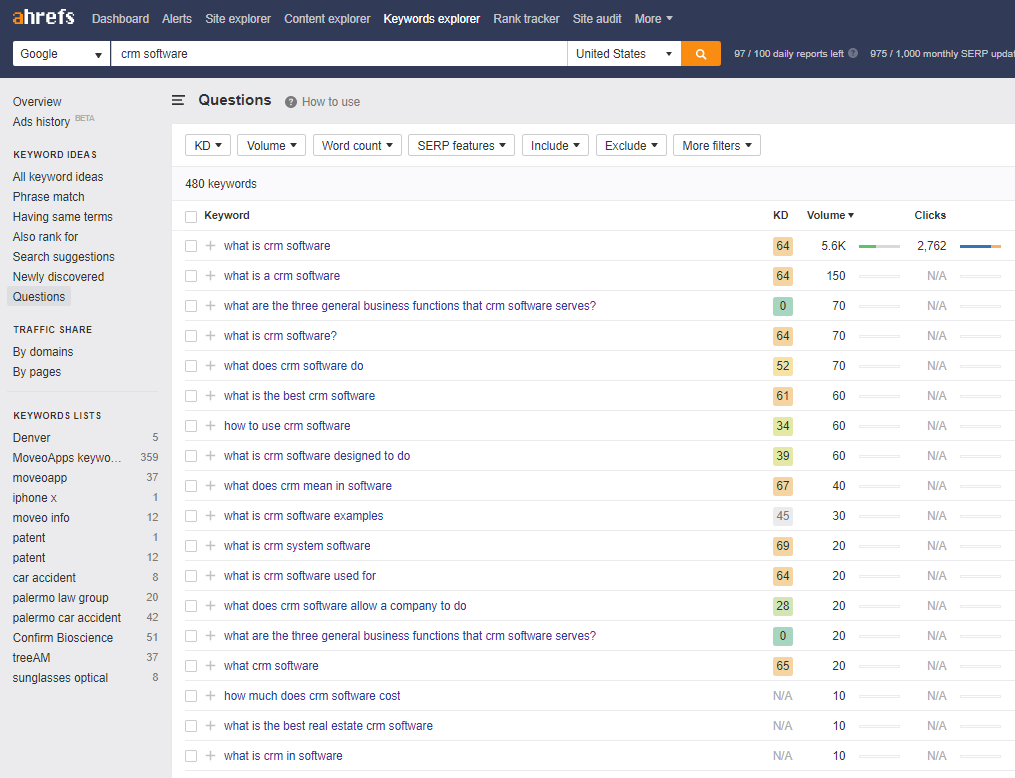
Given what we found here, there are all kinds of questions to frame a piece of content around.
Now, a long, comprehensive piece of content could potentially work to answer all three major question types. However, for our purposes, we are going to focus on one.
Let’s say we want to create a piece of content that answers the short answer question [What does CRM software do].
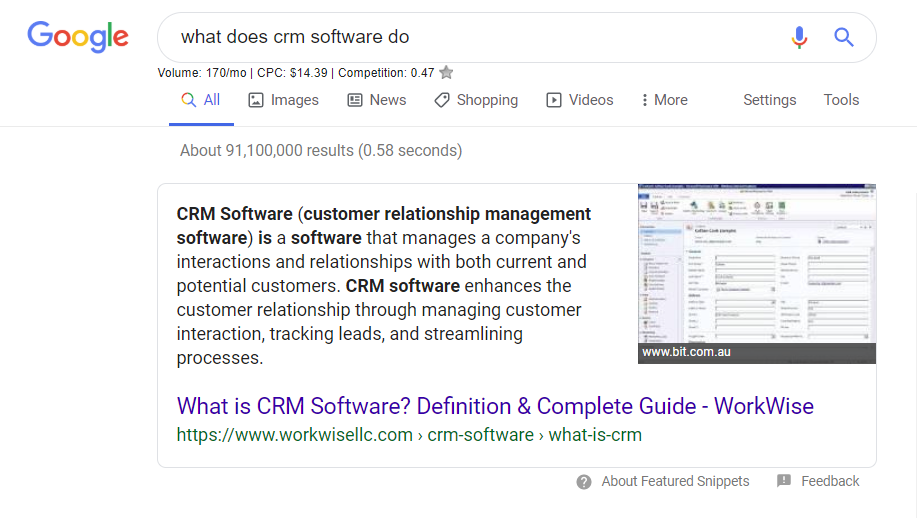
Now that we have the question, let’s look into the keywords that funnel into this answer.
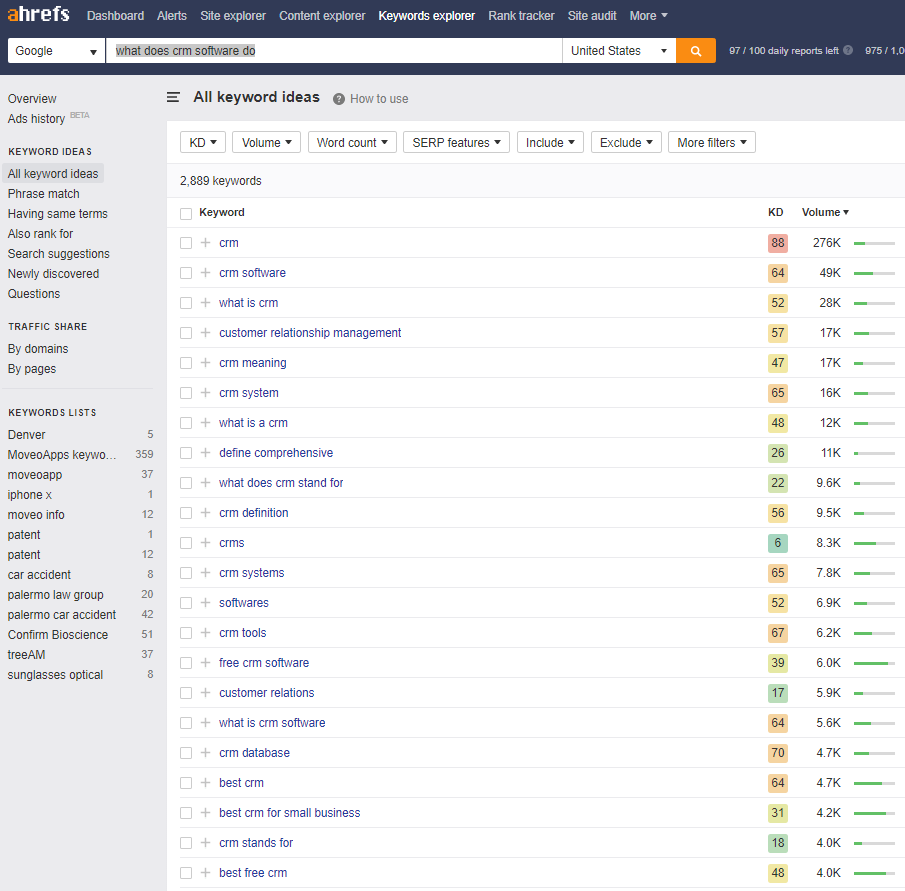
Think about it from a user’s standpoint who is at the beginning of the buyer’s journey.
If someone wants to simply learn more about CRM software and what it does, what informational keywords and phrases would factor into the search?
Based on the keyword research above, this would likely involve terms and phrases like:
- What is CRM
- Customer relationship management
- CRM meaning
- CRM definition
- CRM examples
- Customer relationship
- Relationship management
These are just a handful of the informational keywords and phrases that would ideally work to answer the overarching question.
Now, if there is transactional intent within this content, you are wise to include the following terms/phrases:
- Best CRM
- Best CRM tools
- Best CRM for small business
- CRM solutions
- CRM pricing
When it comes to optimizing for questions and keywords, you need to have an idea of the users’ knowledge prior to looking at the content, what answers they want, and what they should do after consuming the content.
Ultimately, this forms the basis for how you conduct SEO research.
Ranking for Direct Answer Questions
Getting ranked for direct answer questions can be tough.
As with most SEO tactics, there are no laws, just theories.
Based on what we’ve found, getting ranked highly for direct answer questions involves the following common threads:
Get to the Point
Answer the question as early as possible within the content. If you can, try to do this in the first paragraph.
List the Question Right out of the Gate
This helps Google tag your content appropriately.
Elaborate
After you answer the question bluntly, elaborate on it in the subsequent paragraphs. This helps to show Google that you are answering the question comprehensively.
Go the Extra Mile
This would commonly involve answering typical follow-up questions.
For instance, if you answered the question, “What is a lunar eclipse?” you could also include answers to questions like, “How often do lunar eclipses happen?” or “What is the difference between a lunar eclipse and a solar eclipse?”
You want to show Google that you know the answer in as much detail as possible so you are seen as an expert source of information.
Ranking for Short Answer Questions
Getting ranked for short answer questions has a lot of similarities to the process of getting ranked for direct answer questions.
Much of what we’ve observed comes down to the formatting of the content.
Here are a couple of the biggest patterns we’ve noticed:
Make the Language Super Easy to Read
Don’t produce a wall of text; break it up into paragraphs no more than 3-4 lines long. Also, try not to use an extensive amount of business jargon.
Keep in mind, a lot of short answer questions are from people at the beginning of the customer journey – they are simply looking for more information, not to be overwhelmed.
Integrate Questions into Your Header Tags
This should ideally look like a Q&A format.
For instance, the question, “What does a CRM software do?” could be an H2 tag near the beginning of the post which the subsequent content would then answer.
Ranking for Long Answer Questions
Ranking for long answer questions normally requires quite a few factors based on the depth of the content.
On a side note: If a topic could be better answered with a more visual piece of content, Google will probably serve a video. For example, if you search Google for [How to wash pillows] you are going to be met with a video.
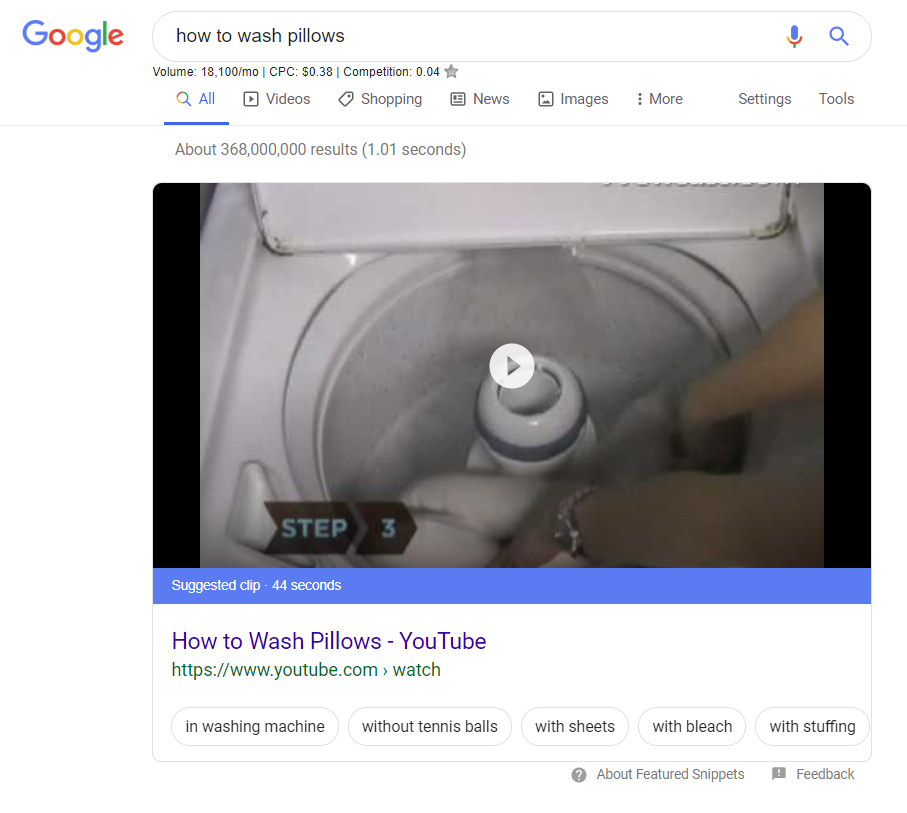
So, if you answer these types of long answer questions, you are smart to focus on a video strategy.
Back to getting ranked highly on long answer queries, we have found several patterns in how content ranks.
Keep the Main Title Focused on the Question
You want your content to appear to be the most relevant to Google.
If you are working to answer the question of “how to create a content plan,” your content should (in some capacity) reflect this in the title.
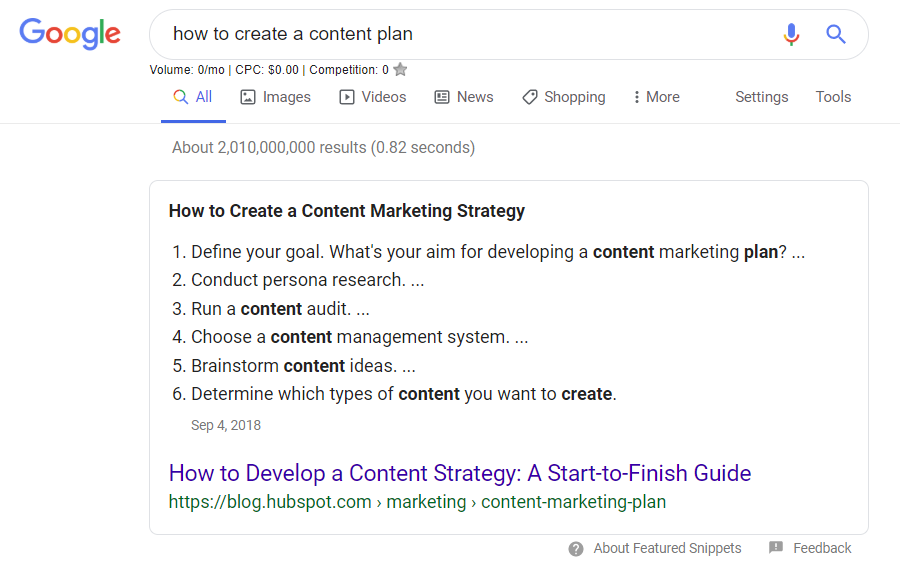
Provide a Step-By-Step Format
Headings in content created for these types of queries often times have certain steps outlined.
Here’s what comes up for the question, [how to do SEO audit].
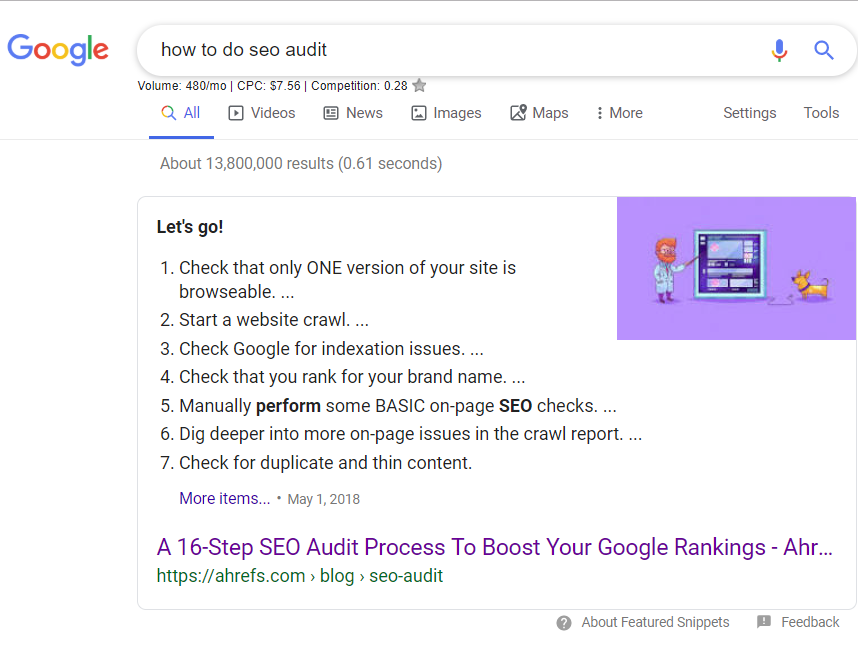
If you look at the content written by Ahrefs, you’ll notice the header tags in the piece correspond directly with the steps listed in the Featured Snippet.
Use Images
Images make your content more user-friendly and engaging – two things that Google loves!
We’ve found that the best-performing content uses imagery to supplement the points being made and provide a more complete answer.
Link out to Reputable Sites
Google wants to reward sites that provide the most credible information, based on the search query.
What makes credible information?
Credible sources.
For example, if you are writing a post on “how to buy a used car,” linking out to reputable auto websites like Consumer Reports, Edmonds, Cars.com, etc. would (ideally) add credibility to your piece.
Wrapping Up
It’s important to note that every situation is a little bit different and the process of optimizing content is not always apples-to-apples.
However, it’s clear that the SEO landscape has been shifting towards long-tail keywords and questions for some time now.
If you want to get your content ranked well (and stand a chance at getting placed in the featured snippet), you need to factor these into your content strategy.
Hopefully, this post has given you a good idea of where to start.
More Resources:
- How Search Engines Answer Questions
- 9 Tips for Creating Your Best SEO Content This Year
- 7 Tips That Will Help You Optimize Your Keyword List for SEO
Image Credits
Featured Image: Created by author, August 2019
In-Post Image: SEMrush





